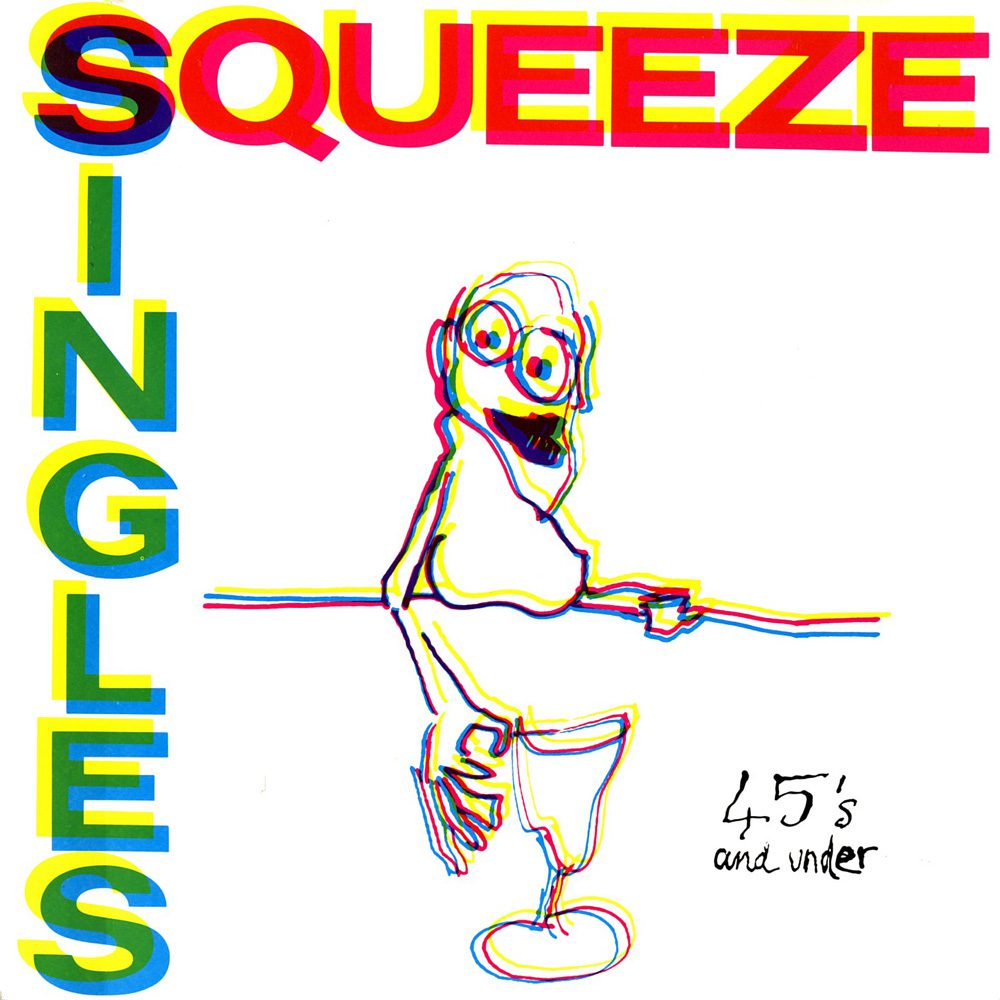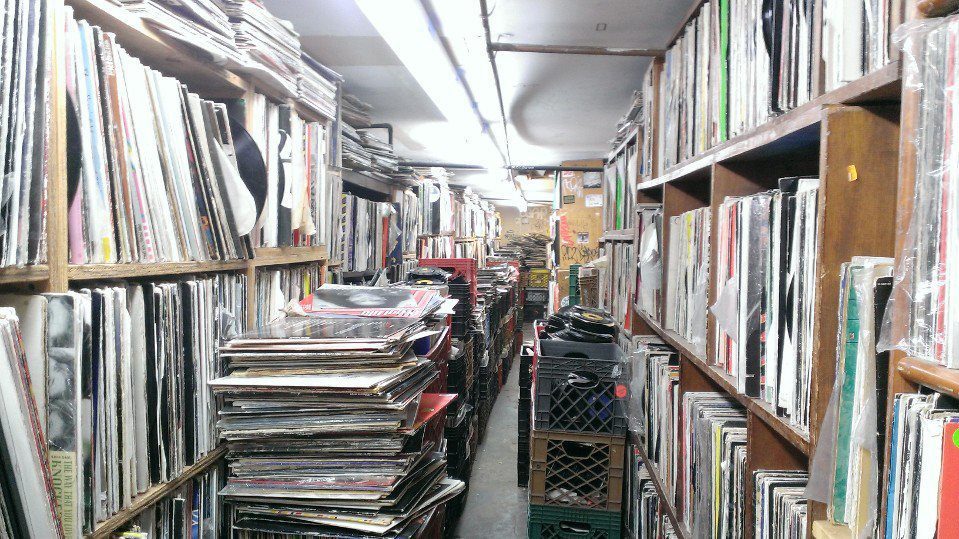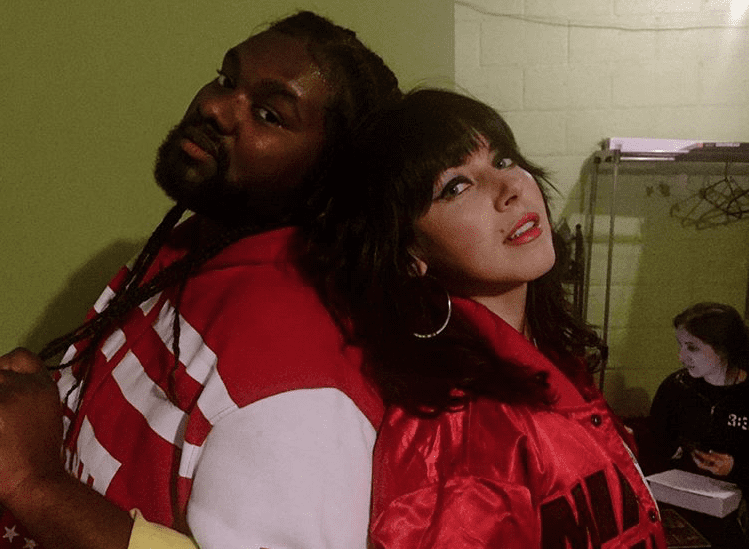ONLY NOISE: For the Love of the Struggle

Friends of mine tend to think that my insistence upon doing things the “hard” or “old-fashioned” way is merely my last cry of pubescent rage sputtering out like a tapped keg. A “contrarian” they call me. A “grandpa.” And I don’t mind. I don’t expect to get away with printing maps of where I’m going for the evening or writing down people’s numbers in my notepad without some ball-busting. I get it. Your grandmother knows how to use an iPhone better than I do and so does your three-year old nephew. Fortunately, this is the one place I don’t have to painstakingly explain my love of vinyl, which to many people outside of our music-website bubble is absurd and archaic. But what about how we acquire vinyl? For some reason I can’t deal with going into a shop to visit the shiny “New Arrival” or “New Release” sections without feeling like I’m phoning it in. I want a struggle. I want to dig. Sifting through piles of Lionel Ritchie and warped Rick Astley singles is a long and grimy endeavor, but the jewel found amongst refuse is always more brilliant.
Of all the junk shops I patronize, I’ve yet to find one as enthralling as Greenpoint’s The Thing. Rarely is an establishment so true to its title; this place is a grotesque organism of its own. An entire eco system of other people’s stuff. With nary a millimeter of free space, the Thing is an institution of sensory overload. Miniature cityscapes are formed by cassette tape skyscrapers, framed by mountain ranges of books, DVDs, and polyester dresses. Getting to the back room is hazardous and requires deft leg weaving through precarious stacks of you-name-it. A magazine asteroid could launch toward your head at any moment. I’d personally recommend a hard-hat.
At first glance, it’s difficult to imagine there could be more shit in the Thing. In the far reaches of the first floor rest thousands of records, leaning like post-storm trees and abiding by no system of organization. There are always a few people scavenging through these heaps, typically men in their mid-thirties, all shading their find with a furrowed brow, like an archaeologist dusting off a shard of pottery. They inspect the spine, note the release date, slip out the onyx disk in the hopes of a scuff-free surface. I suspect to most people this ritual looks as ridiculous as polishing a VHS tape, but to me it’s like local slang.
Much to the hoarder’s delight, this first floor is only the foyer. Teeter down the cement staircase, watch out for the low ceiling, and tiptoe into the basement if you’re up for some extreme rummaging. Down here there are only records. LPs, EPs, singles, ‘45s, maxi-singles, extended re-mixes, etcetera. If the records upstairs were mountainous, the basement is home to Everest. In the past I’ve seen guys down here spelunking for records, fully equipped with respirators and latex gloves. Today I have the cave to myself, and I’m determined to find something great if not rare.
But here exists the dilemma with a junk shop record dive: it’s 99 percent grueling pursuit and one percent success. Couldn’t we just go to a proper record shop? Of course. Will we? Absolutely not. It’s just too easy to waltz into a store and pay $26.75 for a 1980 release of More Specials. From their shelf to yours, with little more than a debit transaction to narrate the experience, it’s just no fun.
Now I’m not delusional; I realize that despite its obscurity, affordability, and hearty population of asbestos, the Thing is a still a store. We may be participating in Capitalism on the slightest level, but we are still consuming. Sure we can slap tags like “up-cycling” and “collecting” on it, but at the end of the day: we are buying shit.
It is not my goal to reprimand those who buy new vinyl instead of used. Nor is it my aim to pat us collectors on the back. That isn’t the point. The point is relaying the experience produced by finding a great record amidst a surplus of awful ones. The thrill of consciously searching for something that is not a necessity, but a pleasure defined by quality and nostalgia, is intoxicating. I like to think of it as cultural vulture-ism: we pick clean the bones of a dead medium.
However it isn’t a venture void of frustration; realizing the appeal of an album’s cover far exceeds its sound is annoying, accepting that an artist’s third album is garbage compared with their first two is disheartening, and not being able to reach that stack of untouched records jammed in a far corner is downright infuriating. I always try balancing on a milk crate, reaching an index finger towards the filmy piles that surely no one has flipped through, only to slip and risk a landslide of vinyl.
Three hours is the average length of time I can spend in these situations. By then my fingernails are piped with grime, my back hurts, and I’m primed for a bout of hypoglycemic rage. I’ll usually have a handful of records that are nothing more than desperate attempts at filling the 12’’ hole in my heart-usually hip-hop maxi singles that will only be heard at a party. All of this, for ten minutes of background music? The head hangs low.
I trudge upstairs and glance at the French DJ guy who has a Whopper-sized stack of records he will be sampling by dinnertime. It’s not fair. If I was a DJ I would be plum-fucking-tickled with the hundreds of unknown disco singles lining the floors of the Thing. All I want is one, just one great record. And yet, as I take a step to exit, I feel the tug.
The tug is the scream of something sought after yet looked over: “Turn around! Look at me! I’m right here!” The tug generally occurs the moment you decide to abandon everything. So I listen, I look, and there peeking out from under a Madonna EP is Squeeze’s Singles: 45’s and Under.
Now, this isn’t a rare record. It’s not even an original LP. It is, as the title affirms, a collection of singles; but it’s been on my list for quite some time.
There are two types of audiences familiar with Squeeze: the one that is privy to their entire body of work, and the other that inquires: “Isn’t that the band who did ‘ Tempted (by the fruit of another ?’” I was, for a very long time, part of the latter group. Seven years ago, when my then-boyfriend suggested I listen to Squeeze, I recoiled in disgust:
“I fucking hate that song. It’s on the lowest rung of the Dad-rock ladder, right there next to annals of Huey Lewis and his News.” He retorted with that typical, yet generally accurate remark: “You just haven’t heard their early stuff.”
Well, I now say the same to you. Though the band’s first three albums Squeeze (1978), Cool For Cats (1979), and Argybargy (1980) should all be heard on their own, Singles is the perfect appetizer to peak interest in a larger meal.
Formed in Deptford on London’s South Bank in 1974, Squeeze was the brainchild of vocalist Glenn Tilbrook, guitarist Chris Difford, and the now-revered pianist Jools Holland. As contemporaries of Elvis Costello and Nick Lowe, the band occupied the space in English New Wave that exalted catchy, pure pop music salted with tongue-in-cheek lyrics. There is something doubly effective about Tilbrook’s honey-sweet voice recounting stories of accidental pregnancy and the ‘ol “Slap and Tickle.” These early years produced wry tracks that are tight yet raw, and a far cry from the overproduced “Tempted.”
The largest account for Squeeze’s shift in sound was the departure of Jools Holland in 1980. I liken his absence to a post-Mick Jones Clash, in which the songs lose a tremendous amount of integrity and quality. The lack of Holland spawned a breeding ground for songs like “Tempted” and “Annie Get Your Gun,” the only two tracks I’d skip on Singles.
The high-points of the album are truly in every other song, but if I had to narrow it down to three, I would recommend “Goodbye Girl,” “Pulling Mussels (From The Shell)” and the painfully infectious “ Up The Junction.”
Despite a slightly nibbled sleeve, the record itself is in wonderful condition. There are no scratches to speak of, and it spins without any signs of warping. These are the nerdy details, but they are important ones nonetheless. These are the details that make three hours of dusty lungs and a debit of $1.99 all the more worth it. As my mom always said: “no pain, no gain.”





